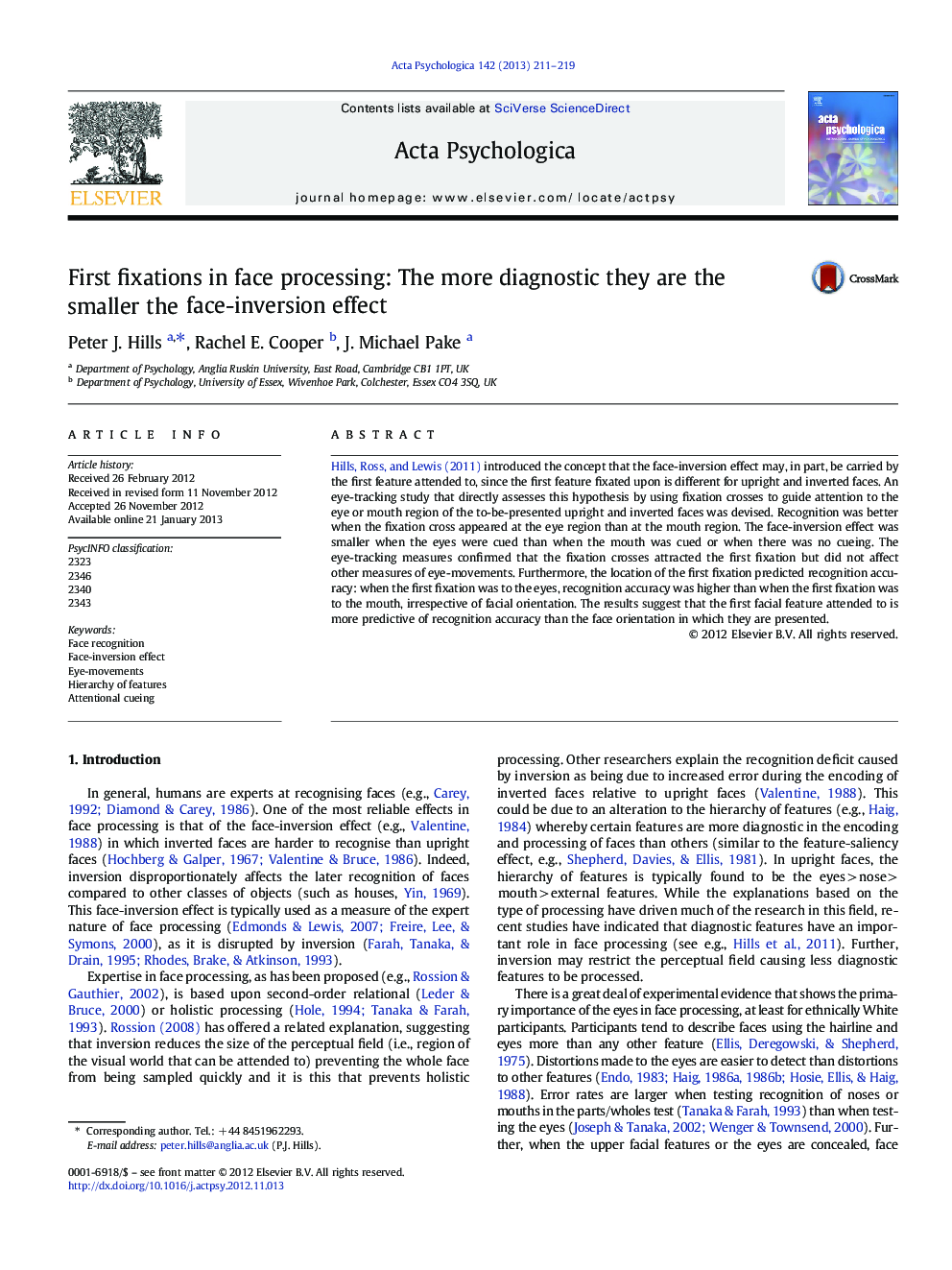| Article ID | Journal | Published Year | Pages | File Type |
|---|---|---|---|---|
| 919883 | Acta Psychologica | 2013 | 9 Pages |
Hills, Ross, and Lewis (2011) introduced the concept that the face-inversion effect may, in part, be carried by the first feature attended to, since the first feature fixated upon is different for upright and inverted faces. An eye-tracking study that directly assesses this hypothesis by using fixation crosses to guide attention to the eye or mouth region of the to-be-presented upright and inverted faces was devised. Recognition was better when the fixation cross appeared at the eye region than at the mouth region. The face-inversion effect was smaller when the eyes were cued than when the mouth was cued or when there was no cueing. The eye-tracking measures confirmed that the fixation crosses attracted the first fixation but did not affect other measures of eye-movements. Furthermore, the location of the first fixation predicted recognition accuracy: when the first fixation was to the eyes, recognition accuracy was higher than when the first fixation was to the mouth, irrespective of facial orientation. The results suggest that the first facial feature attended to is more predictive of recognition accuracy than the face orientation in which they are presented.
► Inverted faces are recognised less accurately than upright faces. ► Cueing the eyes attenuates the face-inversion effect. ► Inversion disrupts the location of the first fixation. ► The location of the first fixation predicted face recognition accuracy. ► Cueing the eyes leads to greater recognition accuracy than cueing the mouth.
